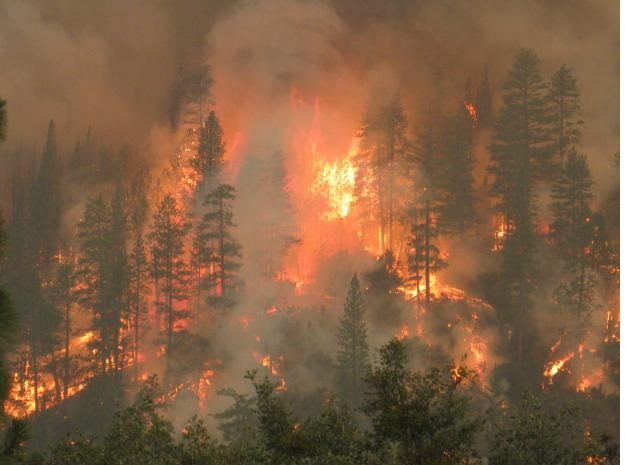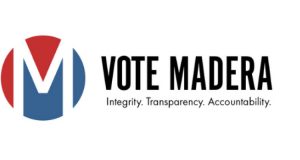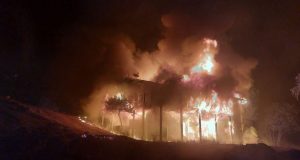CENTRAL SIERRA – Whether you’re new to the mountain area, or have lived here for generations, the historic drought and extreme fire conditions warrant a close look at how you’ve prepared for the fire season.
Karen Guillemin-Kanawyer, Cal Fire’s MMU Fire Prevention Specialist, says the potential for dangerous, destructive wildfires is very real.
“It is up to everyone to be fire safe,” says Guillemin-Kanawyer. “My hope is that people understand that extreme fire danger is a reality and will not disappear tomorrow. One spark can and will start a fire in the SRA [State Responsibility Area] and the FRA [Federal Responsibility Area]. The probability of ignition – the chance that a spark will start a fire when it lands on receptive fuels – is now consistently over 90 percent each day. Fires start faster, burn hotter, produce extreme flame lengths and consume more fuel quicker this year.”
Some simple things the public can do to help is be cautious when driving, towing and parking. Never leave your campfire unattended, check before you light your campfire to make sure it is permissible to have a campfire in your area. Follow all smoking regulations. Teach your children that matches and lighters are tools for adults, not toys for children, and all adults should put their matches and lighters in a safe and secure location.
“We need the public to be safe with anything that can cause a spark – ATV’s, BBQ’s, welding, cutting torches, smoking, flat tires, catalytic converters, tow chains, tie downs with metal clips – if it sparks, it can light,” she says. “If you see a fire, call 911 immediately to report the location. Prepare your home, and provide a minimum of 100 feet of clearance.”
The mountain area is awash in dead and dying trees, and their removal on private property is the responsibility of the home/land owner. For more information contact MMU Forester Len Neilson or visit the Cal Fire website at www.fire.ca.gov. For detailed information on exemptions for homeowners in removing dead and dying trees, click here.
“I would also like everyone to truly read the Ready, Set, Go information and be prepared for the possibility that a wildfire may burn in your area,” says Guillemin-Kanawyer. “It is better to be prepared and never have to implement your plan than to have a fire and no plan. It is impossible to gather your precious belongings, pets, RX, glasses, etc., and get out in an emergency without practice and discussion with your entire family.”
Where will you go? What would you take if you had 15 minutes to leave? ReadyForWildfire.org is an excellent site to prepare your family. For more information contact MMU Fire Prevention Specialist II Karen Guillemin-Kanawyer at 209-966-3622.
Here are 30 tips from Cal Fire to help ensure that you are ready for wildfire:
1. You – Only you can prevent wildfire or any other fire. 99 percent of all fires in Madera, Mariposa and Merced Counties are human caused. That means you can prevent 99 percent of all fires.
2. If or when – History has proven we experience drought, fires, earthquakes, floods and mono winds. We may not know what day our next fire will start but we know it will; will you be the cause?
3. Don’t compete – delete. Are your trees under stress? Trees compete every day for water, soil, nutrients and sunshine. Is your property overgrown with brush or trying to support too many trees? Don’t force your trees to compete; delete the brush to increase the chance of your trees survival.
4. The right thing the wrong way? Clean and properly maintain your lawn mower, weed trimmer, chain saw and/or tractor before you use it outdoors.
5. Lawn mowers were never built to mow dry grass, weeds or vegetation please use a weed trimer, field or brush mower to complete the job.
6. Spark arrestors are required on all internal combustion engines in California.
7. Metal blades striking rocks can create sparks and start fires in dry vegetation. Use with caution.
8. Mow before 10 am; but never when it’s windy or excessively dry.
9. Cut or mow annual grass down to a maximum height of 4 inches.
10. Think 6 – Trim trees to create vertical spacing of 6 feet or 1/3 the height of the tree between grass, shrubs and trees.
11. Remove items around your home that could catch fire from around and under your deck.
12. Relocate piles of wood outside your home to a minimum of 30 feet and completely cover with a fire resistant material.
13. Trim trees regularly to keep branches a minimum of 10 feet away from the other trees.
14. Talk to your children about fire safety; remember matches and lighters are tools, not toys.
15. Vents on homes create openings for flying embers; cover all vent openings with 1/8 inch to ¼ inch metal mesh.
16. Heat from wildfire can cause windows to break. Install dual-paned windows with one pane of tempered glass.
17. Clean out your rain gutters, it is an open place for flying embers.
18. One Less Spark…One Less Wildfire
19. Stop….Think….Fire Prevention. Don’t be the cause of the next fire.
20. What’s cooking? The number one cause of home fires is unattended or careless cooking. Never leave the kitchen while you’re cooking; set a timer to remind you to check your food and turn off your stove before leaving the house or going to bed.
21. Defensible space is sensible space. Many wildland fires start inside the home and travel to the wildland, it’s your responsibility to create a minimum of 100 feet of defensible space between your home and the wildland.
22. Plan, Prepare and Practice – Do you know what to do if your house or neighborhood is on fire? Take a few lifesaving minutes to create an escape plan with your family and post the plan on your refrigerator. You will never remember the plan during an emergency if you don’t practice it, host a family fire drill.
23. Beep, beep, beep – What is that sound? Smoke and Carbon Monoxide alarms require batteries. Smoke alarms with non-replaceable (long-life) batteries are designed to remain effective for up to 10 years. If the alarm chirps, warning that the battery is low, replace the entire smoke alarm right away. For smoke alarms with any other type of battery, replace batteries at least once a year. If the alarm chirps, replace only the battery.
24. Panicked and Confused? In an emergency it is easy to become confused or panicked. Preparing your wildfire evacuation plan in advance will help keep you focused and able to act quickly when evacuation is anticipated or needed.
25. Remember six “P’s” – Keep these six “P’s” ready in case immediate evacuation is required:
• People and Pets
• Papers, phone numbers, & important documents
• Prescriptions, vitamins, and eyeglasses
• Pictures and irreplaceable memorabilia
• Personal computer hard drive and disks
• “Plastic” (credit cards, ATM cards) and cash.
26. Fire – Are you prepared? When a wildfire is heading to your house (if time permits) remember to:
• Shut all windows and doors, leaving them unlocked
• Remove flammable window shades and curtains
• Close metal shutters
• Move flammable furniture to the center of the room, away from windows and doors
• Shut off gas at the meter
• Turn off pilot lights
• Leave your lights on so firefighters can see your house under smoky conditions
• Shut off the air conditioning
27. Practice Safe Towing – Dragging chains throw sparks and start road side fires. Check your hitch and safety pins to make sure you are not the spark on the road.
28. Stop to check out the view – Don’t drive your vehicle onto dry grass or brush, hot exhaust pipes and mufflers will cause fires you won’t even see until it’s too late. Pull off the road onto gravel in a designated pull out.
29. Give us a brake – Brakes that are worn too thin can cause metal to metal contact that can spark a fire – check your brakes regularly.
30. When every second counts – will emergency responders be able to find you in time? Is your address posted so we can see it? At night? During a storm? Both directions? 3 inch height, 3/8 inch stroke, reflective, contrasting with background color of the sign. PRC 4290 article 3 sub section 1274.01



